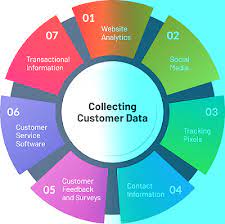How to Get Customer Data?
In the digital age, leveraging customer data is paramount for businesses aiming to enhance their marketing strategies, personalize customer experiences, and ultimately drive sales. Understanding how to gather this data effectively is crucial. 주식디비 This article outlines the most efficient methodologies for acquiring customer data, ensuring your business stays ahead in a competitive marketplace.
Understanding the Importance of Customer Data
Customer data encompasses a wide range of information collected from your clients, including demographics, purchasing habits, preferences, feedback, and online behavior. This data is invaluable for tailoring your marketing efforts, improving product offerings, and providing personalized customer experiences.
Implementing Effective Data Collection Strategies
- Website Analytics ToolsUtilizing website analytics tools like Google Analytics can provide a wealth of information about your website visitors. These tools can track user behavior, identify popular pages, and monitor conversion rates, enabling you to understand customer interests and preferences.
- Customer Surveys and Feedback FormsDirect feedback from customers through surveys and feedback forms is a goldmine for qualitative data. This approach allows you to gather insights directly from your customers about their needs, preferences, and experiences with your brand.
- Social Media ListeningSocial media platforms are where your customers express their honest opinions. Tools for social media listening can help you monitor mentions of your brand, understand customer sentiment, and identify trends that can inform your marketing strategies.
- Email Marketing AnalyticsEmail marketing platforms offer analytics that can track open rates, click-through rates, and engagement with content. This data helps in understanding what resonates with your audience, allowing for more targeted and effective email campaigns.
- Loyalty ProgramsLoyalty programs not only encourage repeat business but also provide a structured way to collect data on purchase history and preferences. This information can be used to tailor offers and communications to meet the specific needs of your loyal customers.
- Point of Sale SystemsIntegrating your point of sale (POS) system with data analytics tools can provide real-time insights into purchasing behaviors and trends. This setup is particularly valuable for retail businesses looking to optimize inventory and improve customer service.
- Customer Relationship Management (CRM) SystemsCRM systems are designed to manage all your company’s relationships and interactions with current and potential customers. They are a central repository for customer data, enabling personalized communication and tracking of customer engagement over time.
Leveraging Customer Data for Business Growth
Once you have collected customer data, the next step is to analyze this information to uncover patterns and insights. These insights can inform your marketing strategies, product development, and overall business decisions, leading to increased customer satisfaction and loyalty.
- Personalized Marketing CampaignsUsing customer data to segment your audience allows for more personalized and effective marketing campaigns. Tailoring messages and offers to meet the specific needs and preferences of different segments can significantly increase engagement and conversion rates.
- Product Development and InnovationCustomer feedback and purchasing data can inform product development, helping you to create offerings that meet the evolving needs of your market. This approach can lead to higher customer satisfaction and retention rates.
- Enhanced Customer ExperiencesPersonalizing the customer experience based on data-driven insights can lead to more meaningful interactions with your brand. Whether through personalized recommendations, content, or support, customers are more likely to remain engaged and loyal when they feel understood and valued.
Conclusion
Gathering and leveraging customer data is essential for businesses looking to thrive in the digital marketplace. By implementing effective data collection strategies and analyzing the insights gained, businesses can enhance their marketing efforts, improve product offerings, and provide exceptional customer experiences. As you




